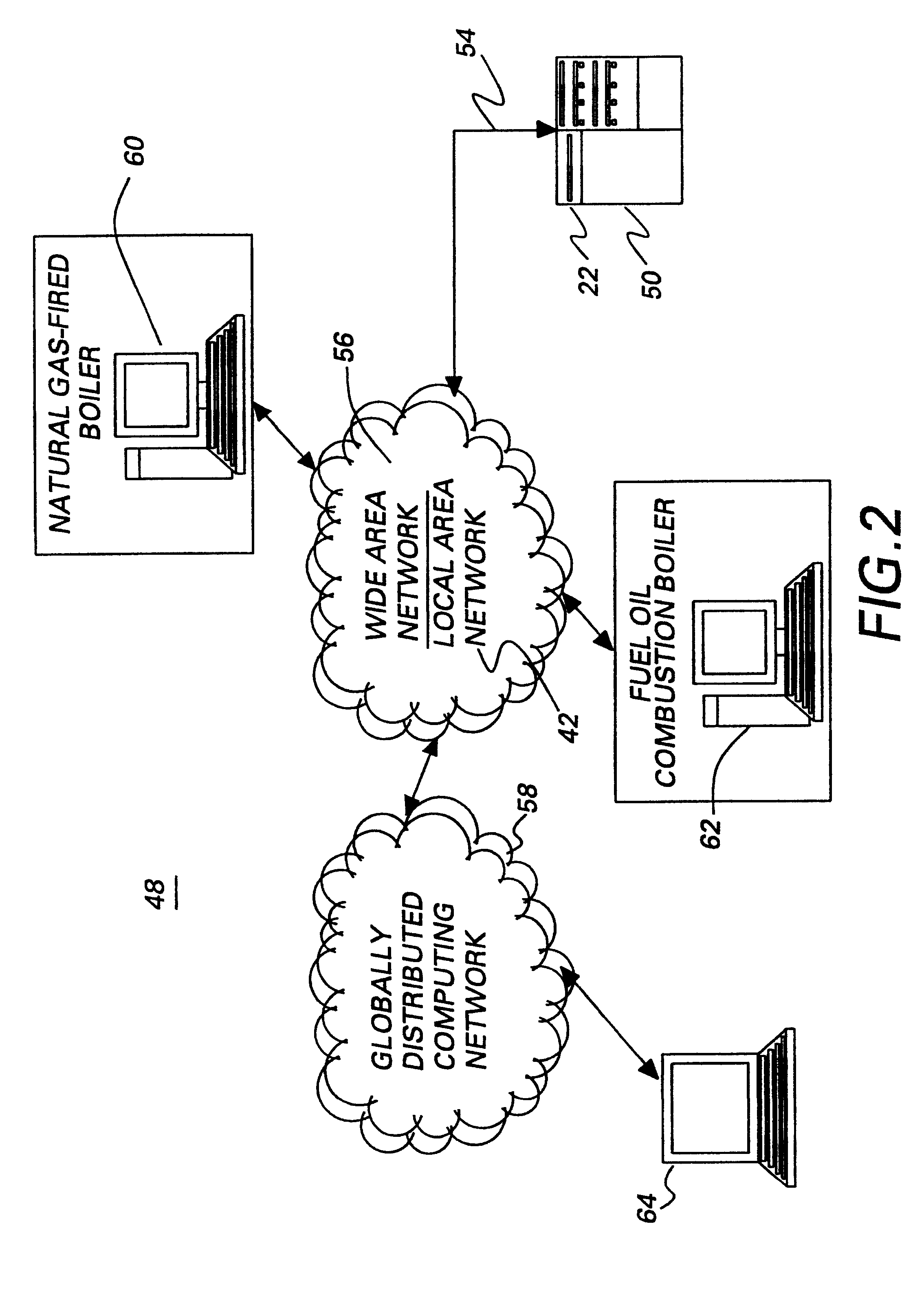Methods and systems for energy and emissions monitoring
a technology of energy and emissions monitoring and methods, applied in the field of air quality management, can solve the problems of consuming energy, generating emissions, burning of boilers, furnaces, etc., and achieve the effect of easy dissemination
- Summary
- Abstract
- Description
- Claims
- Application Information
AI Technical Summary
Benefits of technology
Problems solved by technology
Method used
Image
Examples
Embodiment Construction
The Emissions Monitoring Module 20 is further illustrated by the following non-limiting example. This non-limiting example reflects a prototype industrial demonstration. The Emissions Monitoring Module 20 monitors natural gas (NG) usage, and production measurements were taken, so all information was known in order to track and to predict very conservative estimates of actual emissions. As those of ordinary skill in the art understand, emissions permits sometimes allow the use of mathematical models for predicting emissions based upon energy usage. The transfer functions for NO.sub.X, SO.sub.X, and CO.sub.2, as a function of natural gas (NG) usage, are below: ##EQU1##
Here the local permit assumes NO.sub.X from Machine "A" and from Recuperator "A" are constant. NO.sub.X from other NG applications can be fitted to a simple expression. ##EQU2##
where the constants C.sub.1, C.sub.2, . . . C.sub.7 approximate sources of emissions that are independent of natural gas usage. In this example, ...
PUM
| Property | Measurement | Unit |
|---|---|---|
| energy usage | aaaaa | aaaaa |
| energy | aaaaa | aaaaa |
| real time | aaaaa | aaaaa |
Abstract
Description
Claims
Application Information
 Login to View More
Login to View More - R&D
- Intellectual Property
- Life Sciences
- Materials
- Tech Scout
- Unparalleled Data Quality
- Higher Quality Content
- 60% Fewer Hallucinations
Browse by: Latest US Patents, China's latest patents, Technical Efficacy Thesaurus, Application Domain, Technology Topic, Popular Technical Reports.
© 2025 PatSnap. All rights reserved.Legal|Privacy policy|Modern Slavery Act Transparency Statement|Sitemap|About US| Contact US: help@patsnap.com



